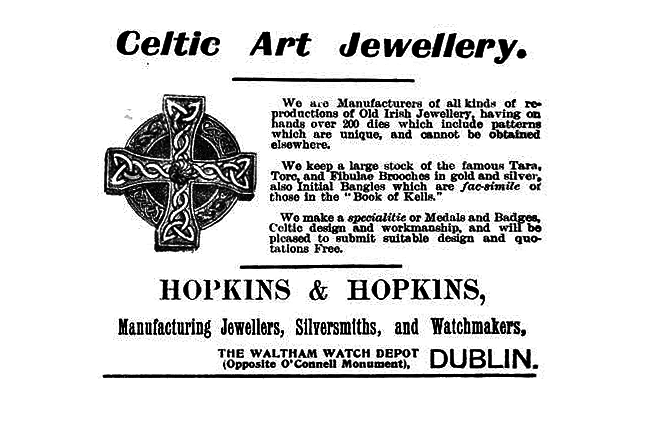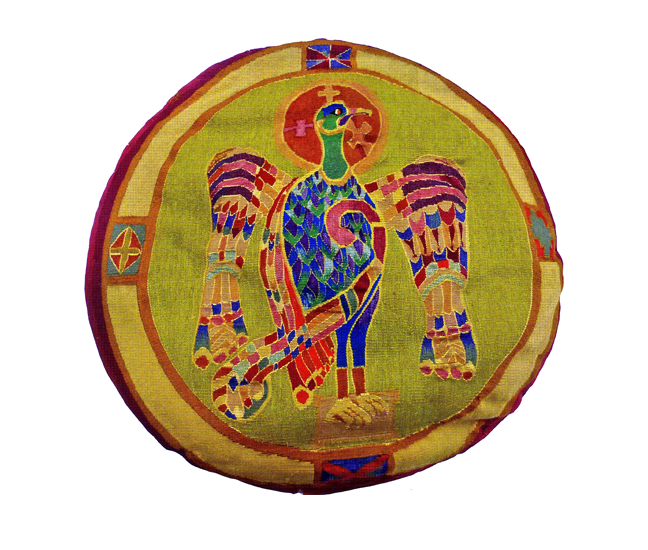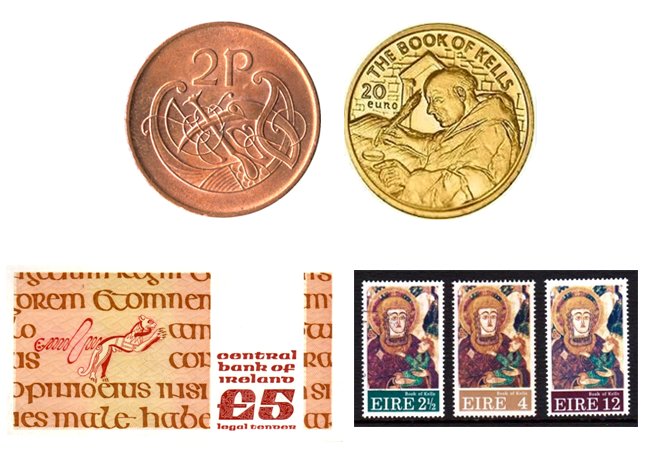Home / History / Irish History / The Book of Kells: Exploring an Irish Medieval Masterpiece / The Book of Kells as Irish icon
This article is from the free online
The Book of Kells: Exploring an Irish Medieval Masterpiece


Reach your personal and professional goals
Unlock access to hundreds of expert online courses and degrees from top universities and educators to gain accredited qualifications and professional CV-building certificates.
Join over 18 million learners to launch, switch or build upon your career, all at your own pace, across a wide range of topic areas.

 Fig 1. An advertisement for some of the Celtic revival wares made by the jewellers Hopkins and Hopkins, including Book of Kells-inspired bangles. CC-PD.
Fig 1. An advertisement for some of the Celtic revival wares made by the jewellers Hopkins and Hopkins, including Book of Kells-inspired bangles. CC-PD.
 Fig 2. Kells embroidery designs. In fact, inspiration for some of these designs comes from other early Irish works, including the Book of Durrow. CC-PD.
Fig 2. Kells embroidery designs. In fact, inspiration for some of these designs comes from other early Irish works, including the Book of Durrow. CC-PD.
 Fig 3. A cushion made by the Dun Eimear guild for the Honan chapel, Cork, based on the symbol of St John from fol. 27v. Honan chapel collection, University College Cork.
Fig 3. A cushion made by the Dun Eimear guild for the Honan chapel, Cork, based on the symbol of St John from fol. 27v. Honan chapel collection, University College Cork.
 Fig 4. An Irish 2 pence coin. © Central Bank of Ireland. Fig 5. A special issue €20 coin. © Central Bank of Ireland. Fig 6. An Irish £5 note. © Central Bank of Ireland. Fig 7. Irish postage stamps. © An Post.
Fig 4. An Irish 2 pence coin. © Central Bank of Ireland. Fig 5. A special issue €20 coin. © Central Bank of Ireland. Fig 6. An Irish £5 note. © Central Bank of Ireland. Fig 7. Irish postage stamps. © An Post. 





